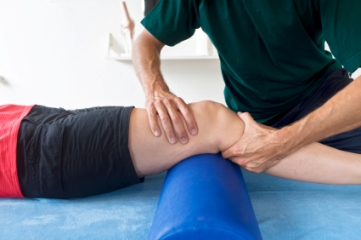Having a doctor say that an athlete has torn their anterior cruciate ligament (ACL) playing sports is something parents, athletes, and coaches alike fear. The diagnosis usually prompts a whole lot of questions, such as "Is surgery necessary?" "How long will the rehabilitation process take?" "How will the injury affect my child's chances for a college athletic scholarship?"

The list of questions is endless but the reality is this: an ACL injury will take, at the very least, several months to rehabilitate before an athlete can return to full competitive play, sometimes much longer, with at least one recent study suggesting that, even a year after ACL reconstructive surgery, as many as two-thirds of athletes have not returned to their pre-injury level of performance.
With many parents pushing for as early a return to sports as possible, the critical question is "How long?" Research presented in the June 2011 issue of the Journal of Orthopedic Sports Physical Therapy sheds some light on the answer to that question.
Rehabilitation process
The first three to four months of physical therapy after ACL reconstructive surgery are relatively predictable and mostly focus on three things: restoring range of motion, controlling the swelling, and gradually strengthening the knee. During this time, the ACL graft grows steadily into its new home to achieve optimal stability. There is little variability or difference among athletes at this stage in rehabilitation, regardless of age, healing ability, or sheer determination to get better.
In the later stages of rehabilitation, there is greater variability, with athletes recovering at different rates, depending on such variables as the sport they play, the success of ACL reconstruction, and overall commitment to the rehab process. Some athletes demonstrate increased strength and improvements in sports-specific movements a month or two earlier than others.
Before returning to sports, the following are very common milestones a physical therapist will want to see an athlete reach in the rehabilitation process in order to be ready to return to play:
- full range of motion
- no or very minimal/controlled swelling
- full strength in hamstrings, quads, and calves
- symmetrical single leg balance
- ability to do a full squat, lunge, and jump without pain or deviation of movement
- restored cardiovascular and muscular endurance
- strong core musculature
- ability to run, stop, and cut at 80% speed without pain or deviation of movement
Single-leg hopping
One way for anxious parents, athletes, coaches, and athletic trainers to know that there is light at the end of the rehabilitation tunnel is whether the athlete can complete a series of hopping tests.
Researchers have found that using variations of a single leg hopping test is an excellent way to determine if an athlete's knee is strong enough for competition. An athlete achieving 90% of the distance on a single leg jump, cross-over hop, and triple hop on their injured leg as they can when hopping on their uninjured leg has the strength, stability, and balance necessary to minimize future risk of injury and maximize sports performance.
The series of tests, which combine several of the independent objective measures analyzed during rehabilitation and listed above, should only be performed under the guidance of a physical therapist, athletic trainer, or physician.
While the ability to perform these tests appropriately suggests that a return to sport - other things being equal - may be imminent, the final decision should be left to the clinical judgment of your child's orthopedic surgeon.
Myer GD, et al., Utilization of Modified NFL Combine Testing to Identify Functional Deficits in Athletes Following Reconstruction. J Orth Sports Phys Therapy. 2011;41(6): 377-387. doi:10.2519/jospt.2011.3547.
Posted September 17, 2012








